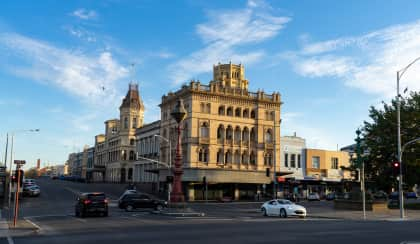Recovery on the horizon: Ballarat’s market shows momentum
After a year of market softening, Ballarat’s property sector is showing promising signs, offering buyers a window of opportunity ahead of the anticipated recovery.

Market indicators have suggested the regional hub of Ballarat is entering a turning point, with the housing market offering opportunities for buyers and investors.
According to PRD’s Q1 2025 Property Market Update, Ballarat’s median house price fell to $510,000 and a median unit price of $362,000 by the end of 2024, reflecting an annual decline of 8.6 per cent for houses and 6 per cent for units.
Despite the downturn, total property sales surged in the final quarter of 2024 compared to Q4 2023, with houses rising by 43.2 per cent and units by 47.5 per cent.
The property market update revealed sustained demand, positioning Ballarat for potential price growth.
Chief economist at PRD, Dr Diaswati Mardiasmo, said that the softening of prices over the 12 months to December 2024, combined with low levels of new housing supply, has created opportunities, particularly for first home buyers and investors.
“This is that key opportune time before Ballarat starts to recover, due to the very little amount of new stock coming to market,” Mardiasmo said.
“We do still have very cautious buyers in Ballarat, especially with the higher interest rates and some uncertainties on where everything else is going concerning the election and current financial markets.”
PRD’s property update also indicated that rental market conditions further reinforced Ballarat’s appeal.
“The median house and unit price is approximately 40–45 per cent cheaper than Melbourne,” Mardiasmo said.
She noted that Ballarat recorded a house rental yield of 3.6 per cent in December 2024.
She said that during this time, median house rents held steady at $420 per week, while the number of houses rented dropped by 31.1 per cent, suggesting an undersupplied rental market.
“With a more affordable entry price compared with Melbourne Metro, Ballarat is an attractive investment alternative,” Mardiasmo said.
According to Mardiasmo, the unit market, traditionally smaller in Ballarat compared to metropolitan areas, faced unique challenges over the past year.
Units accounted for just a third of Ballarat’s property sales, reflecting a local preference for detached homes.
However, a 47.5 per cent increase in unit sales in the past 12 months to Q4 2024 suggested growing interest.
“This suggested that units are starting to become popular, and with almost no houses being planned for construction in 2025, more and more house buyers will divert their attention to units,” Mardiasmo said.
Mardiasmo added that first home buyers were especially well-placed to benefit from current conditions in Ballarat.
Ballarat’s median house price sits comfortably below Victoria’s $650,000 regional property price cap at $510,000.
“This means that first home buyers will most likely be able to utilise multiple first home buyer schemes and grants to access the market,” Mardiasmo said.
“Even if there is a new government, whether there is a new price cap (for the 5 per cent) or being able to claim back mortgage interest on tax and its relevant price threshold, first home buyers should still be able to use those schemes to their advantage if buying in Ballarat.”
Mardiasmo said a positive momentum for Ballarat’s market has been forecast, driven by infrastructure projects and steady employment growth.
Ballarat’s unemployment rate now sits at 4.3 per cent, closely aligned with Melbourne’s 4.1 per cent, reflecting strong economic growth.
“With more positive news from the external factor – for example, more cash rate cuts, stability in the political system, Melbourne market recovering/growing – combined with the local situation of very little new residential stock coming to market, we should start to see some price growth in Ballarat,” Mardiasmo said.
In addition, Mardiasmo reported that an average Victorian home loan was $631,514 at the end of 2024, making Ballarat’s median property prices highly competitive.
“This really does create a key opportunity for first home buyers and investors,” she said.
The report also showed that Ballarat’s vacancy rates remained tight at 1.6 per cent in December 2024, well below the Real Estate Institute of Australia’s 3 per cent healthy benchmark.
“So that hits all of the requirements for an investor – more affordable entry price, higher or on par yields, and quicker occupancy of rental homes,” Mardiasmo said.
“Also, with very few new residential projects planned for 2025, there is lower competition for landlords in the future.”
The property market update reported that development activity in Ballarat remained modest, with approximately $63.2 million in new projects scheduled for 2025.
However, only one new house project and four unit projects are confirmed so far – a figure that Mardiasmo warned will not be enough to meet future demand.
“An undersupply in new housing stock can assist in stimulating a housing market price recovery sooner rather than later,” Mardiasmo said.